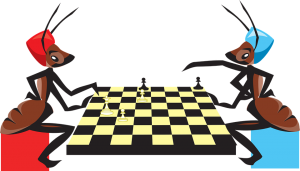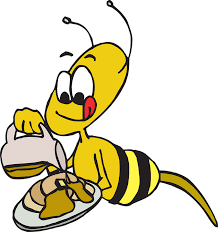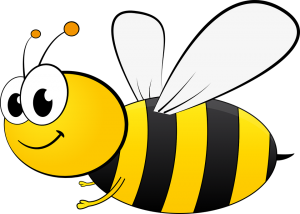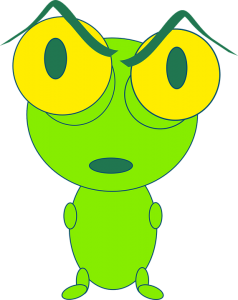
The amazing world of insects
The insect world is so fascinating that it is mind-blowing. When you think of the many insects there are to humans it can leave you scratching your head. It is estimated that there are 10 quintillion insects on our planet now that’s a lot of insects that outnumber the human race by far and what is even more interesting is that many of these insects are so diverse.
There are some insects known as good bugs or beneficial insects that assist us in protecting our gardens and landscape. What that means is these insects feed on other insects that are known as the bad bugs which feed on and destroy our garden plants.
Here is a list of the good, the bad, and the ugly, just kidding if there were such bugs as the ugly I would love to see how they looked even though we have some really ugly ones.
Affiliate Disclaimer
As the owner of this website, I’ve tracked down special deals for some of the products mentioned here. When you use the links on this page to make a purchase I may get a small commission and you will get a great bargain. It’s a WIN-WIN for both of us.
Good bugs or Beneficial insects
- Ladybirds
- Praying mantis
Happy Bee - Butterflies
- Bees
- Mealybug destroyer
- Assassin bug
- Damsel bugs
- Green lacewing
- Minute pirate bug
Bad bugs or garden insects pest
- Mealybugs
- Slugs and snail
Bad Bug - Scales
- Thrips
- Whiteflies
- Aphids
- Caterpillars
- Ants
- Spider mites
Insect Body Parts And Their Functions
Insects are really amazing but the reason they can do what they do is because of their body parts and the functions they are allowed to so here are the names and functions of their body parts
The antennae– can be found on top of the insect’s head. The job of the antennae is for the sense of touch or to detect odors.
The head– The insect’s head makes up the first part of the insect’s segmented body. The head of insect species is of different form and size.
The Eyes of insects– some insects have eyes known as simple eyes. These eyes appear as small swellings. Insects can have 2-3 simple eyes that are used in the detection of light. An example of these insects is dragonflies.
Insects with compound eyes have several eyes, each eye contains a cone, lens, visual cells, and pigment cells that are sensitive to light. An insect’s eyes are compound, containing thousands of ommatidia that collect information and then transferred this information to the insect’s brain. The details of this information are determined by the image that is affected by the number of ommatidia that is in the eyes of some insects.
Colors such as blue, ultra-violet light, and green-yellow are brought about by the ommatidia that contain pigments.
Mouthparts– The mouth of insects differs, some insects have piercing-sucking mouthparts that are like a hypodermic needle. Examples of these insects are thrips, whiteflies, and mealybugs. These insects pierce the leaves and suck the plant juice. Some insects like thrips have been known to transfer viruses in this way because their saliva is toxic to plants

Then you have the chewing insects that feed on garden plants by eating the leaves and in some cases the stems of succulents. Grasshoppers and beetles fall into this category.
Siphoning-next, there are insects that have tounges that are shaped like coils. These coil-like tongue reaches into the flowers of plants and sucks the nectar. In this group, you have a butterfly and a bee.
Sponging insects such as the housefly secret saliva over the surface of the food, as the food is being dissolved by the fly’s saliva the liquefied food is drawn up into its mouth.
Thorax– The thorax is the middle or mid-section of the insect. The thorax holds the wings, head, abdomen, and legs of an insect.
Wings– The insect’s wings are responsible for helping the insect to take flight as a means of protection and also reaching high up places to feed. Insects that reach adulthood have 2 pairs of wings except for flies that have 1 pair.
The wings of some insects have scales or fine hairs. Also, some insects have hard or leathery wings while some are membranous.
Legs– Adult insects have 6 legs. These legs are designed for running, climbing, jumping, or walking. Each segment of the thorax bears 1 pair of legs.
The abdomen– The insect’s abdomen is located behind the thorax this is the third part of the insect. The abdomen contains the insect’s genitalia.
Insect body parts and their functions
The final word
We can do a more in-depth study of parts of and insects but this is just to give you an idea of the many insects that are found in your garden. The insect world is so vast and their anatomy is really amazing so the next time you’re in your garden stop and take a look at these insects as they move about in their world whether they are the good or the bad guys.
About the author
Norman loves being in the garden, both at home and for his job....
he is 'Natures Little helper' being outdoors, growing his vegetables and flowers from an early age.
Now having spent over 22 years in the profession he want to give some of his knowledge to others...
his vast array of hints and tips you will find scattered over this site will help you no end growing plants in your garden.



Hi Norman and I’m so glad I happened upon your site! As a kid growing up, I was so fascinated by insects, my parents bought me an insect book. I studied it from cover to cover and even started a bug club with some of the neighborhood children. Ha ha! I love the way you group the various insects together by what roles they play in nature. This is a very informative and interesting site! Thank you for providing it!
Hello my good friend so good to see you and I am so happy that I could help. The insect world is truly amazing. Thanks so much for sharing some of your childhood memories with me. All the best of success and have a good day.
Hi Norman, once more you provide interesting content here.
I like to read about insects as here there are quite many. These little body parts are so cute and different looking at each single species.
Under the magnifying glass, they sometimes look really dangerous and like from out of another world.
Have you researched edible insects before? I think this would be a very interesting topic too
Hello my good friend and thanks so much will have to look into this interesting topic.